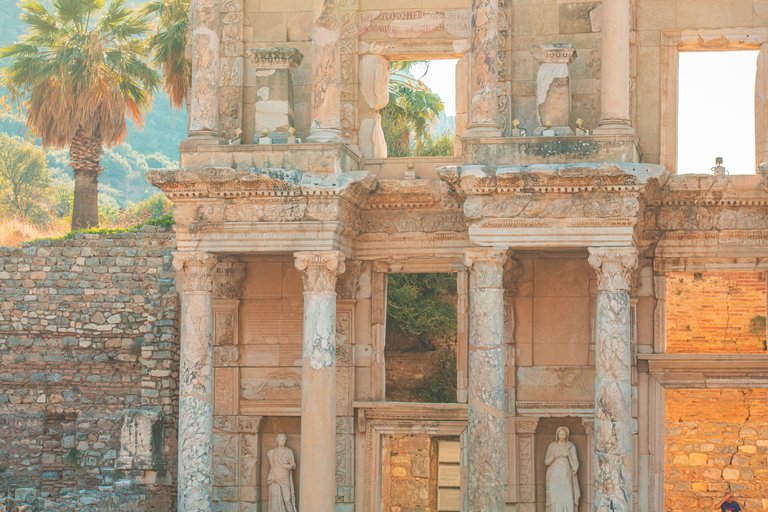
Library of Celsus
In the Ancient City of Ephesus, you can find the Library of Celsus, which is now part of Turkey. The architecture of the structure is pretty impressive and screams historical significance. It was built in the 2nd century AD during the Roman period and commissioned by Tiberius Julius Celsus Polemaeunus, a Roman senator and governor of the province of Asia. Hence the name: Library of Celsus. Pretty cool huh!
Just by looking at the library, you can tell it was built by Romans. The two-story facade with a central entrance is quite typical of Roman architecture, which is mostly also decorated with sculptures and intricate reliefs. The details of the reliefs are always so magnificent to me, as it shows that a lot of care was put into building the library. In today's time, we can now identify this how significant the library must have been for the scholars in the Roman time. Like most libraries back in the day, the main purpose was to hold knowledge and wisdom. The Library of Celsus housed a big collection of scrolls and books that served as a hub of knowledge and culture that must be preserved. It is one of the most important and significant libraries of the ancient world.
But it wasn't just a collection of books and scrolls. It also functioned as a cultural center for the people. There were lecture halls and there were multiple events for intellectuals and academic masterminds. Making it an inviting hub for those that want to master their brainpower.
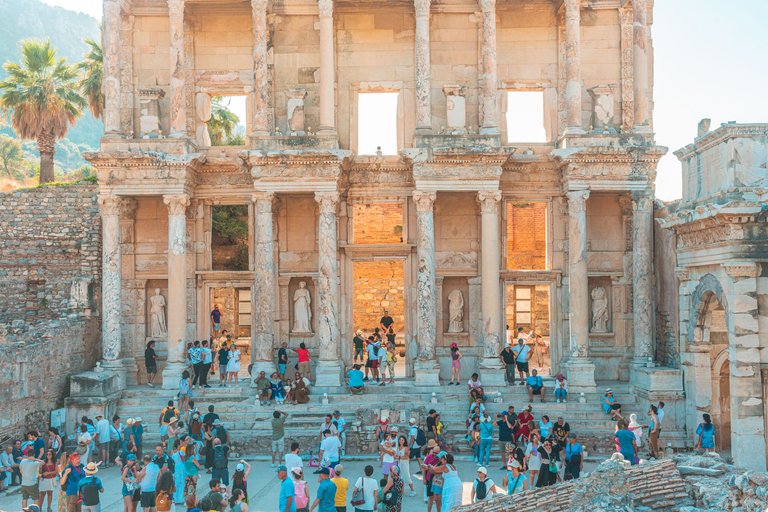
Facade Sculptures
The statues represent four virtues:
- Sophie (Wisdom)
- Arete (Virtue)
- Ennoiua (Intelligence)
- Episteme (Knowledge)
The statues were added to give a broader sense of the philosophical dimension in a symbolistic way. Symbolism was, and still is, a way to express and give more meaning to something. For us this translates into another sign of importance for the Romans during that time.
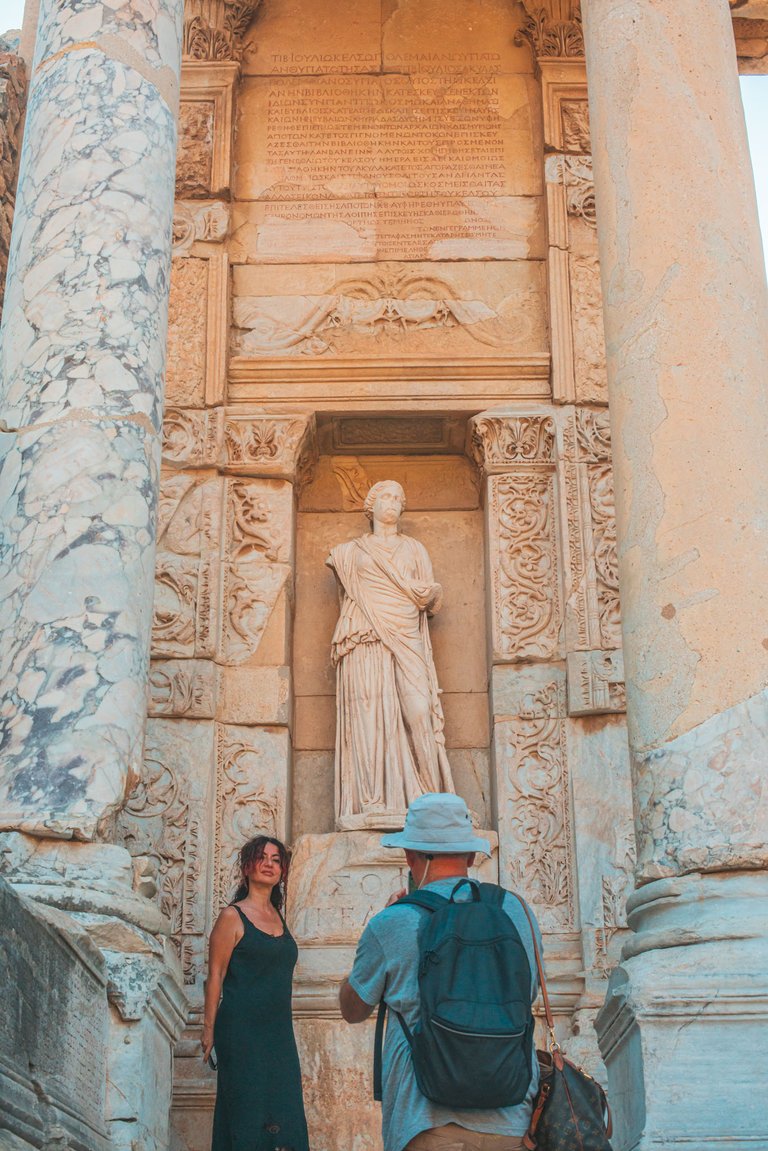 |
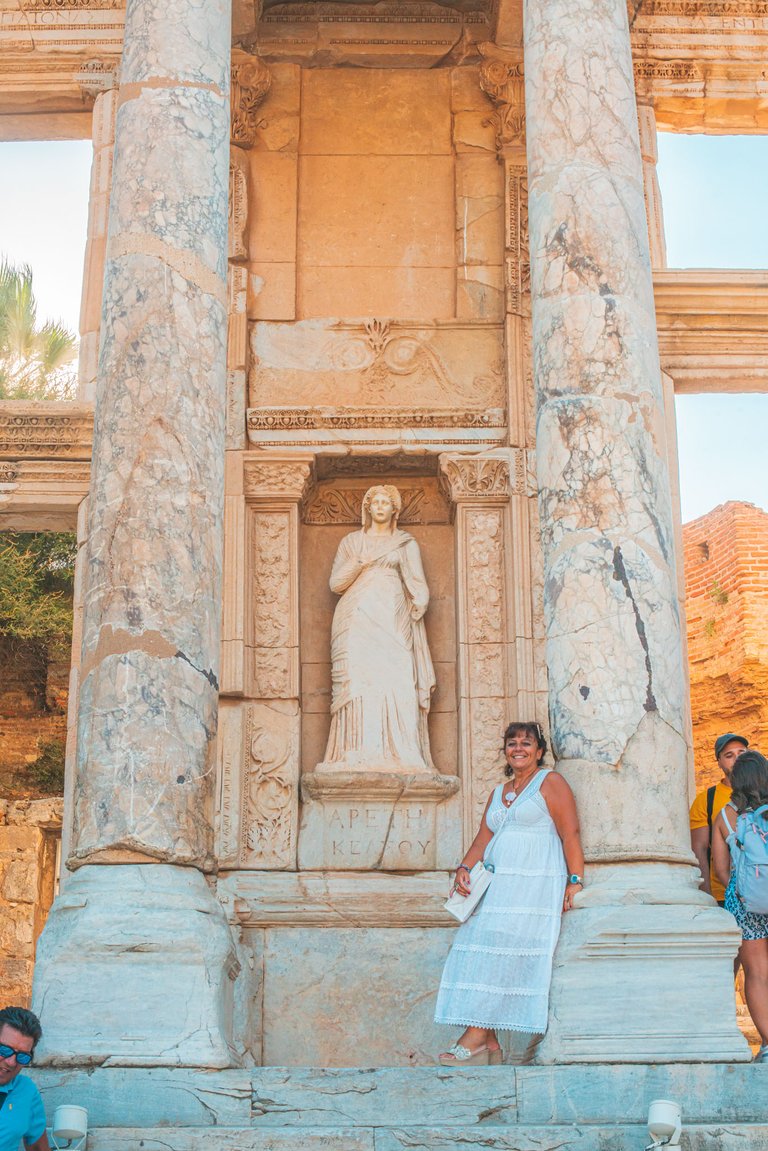 |
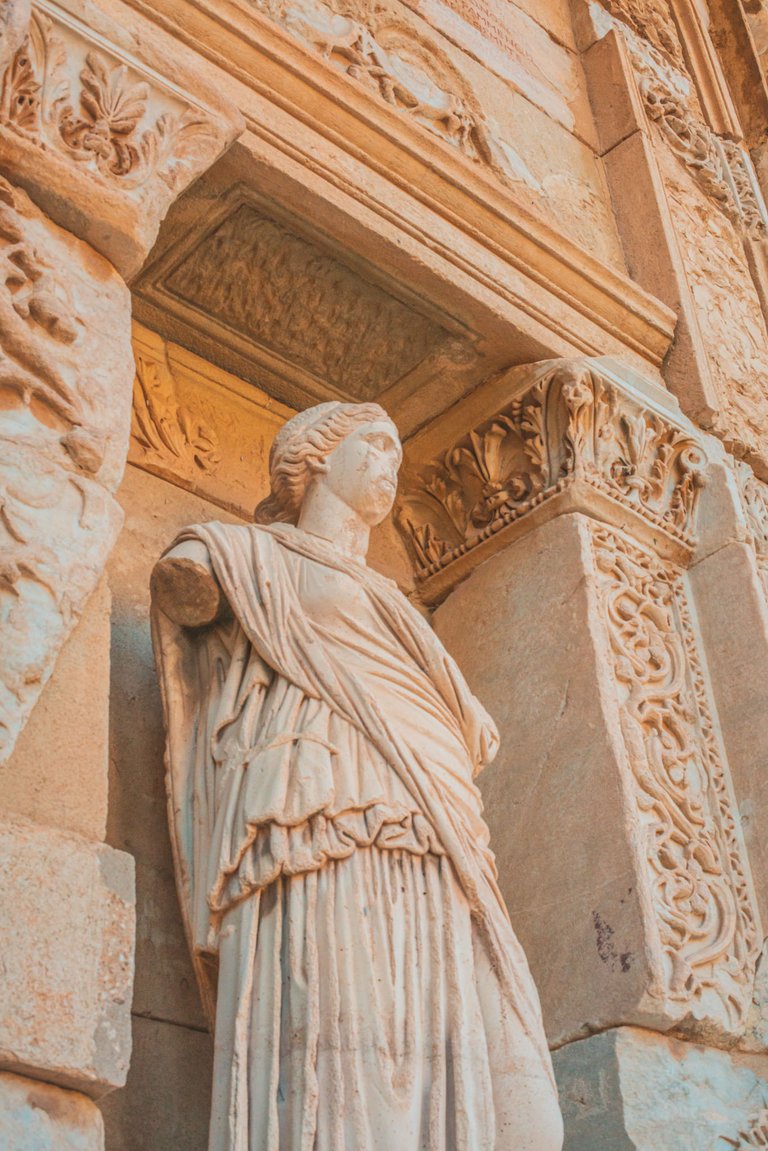
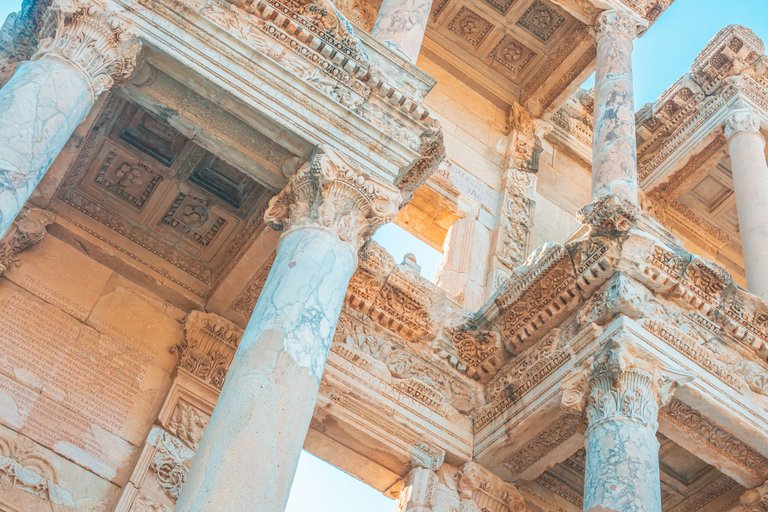
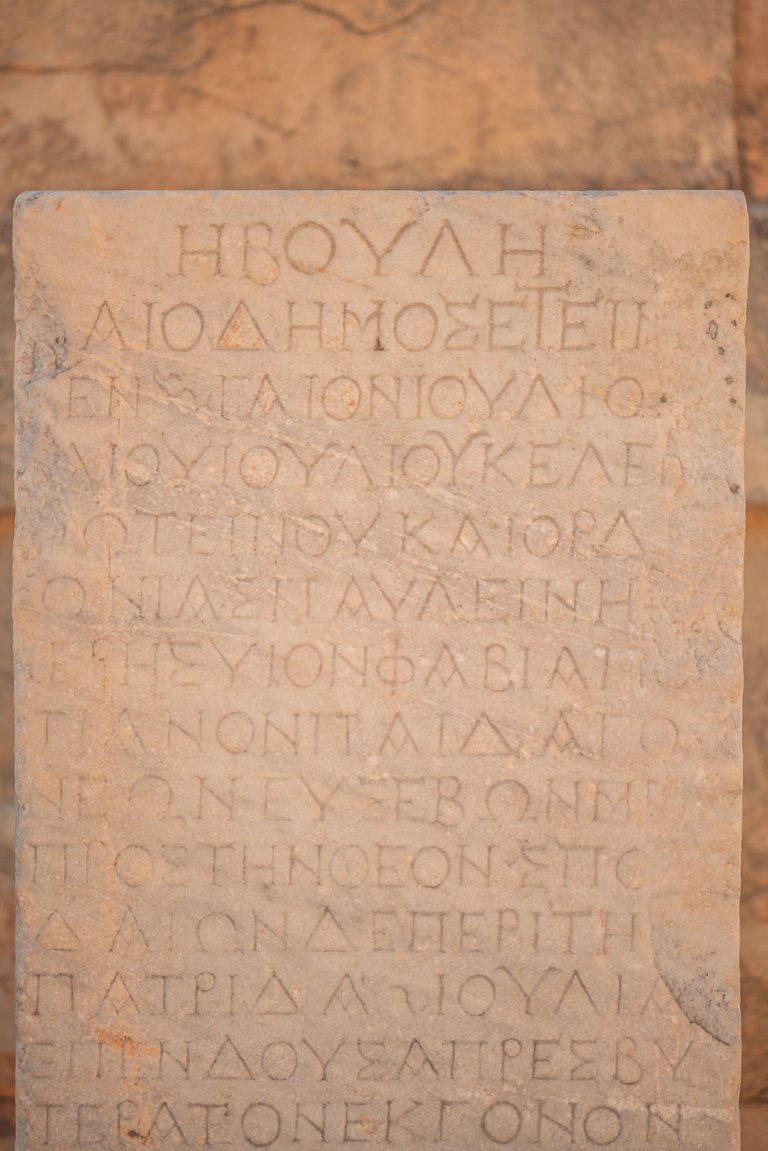
Restoration
Like with any ancient structures, damages are almost not preventable. The library suffered damage over the centuries due to earthquakes and world conflicts. It was almost completely destroyed due to an earthquake in the 3rd century AD. Let that sink in, as: the facade was being reconstructed in the 20th century. This blew my mind.
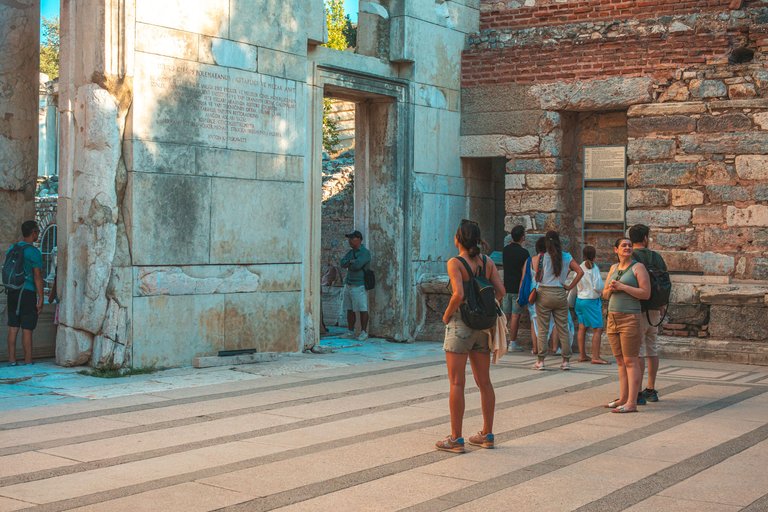
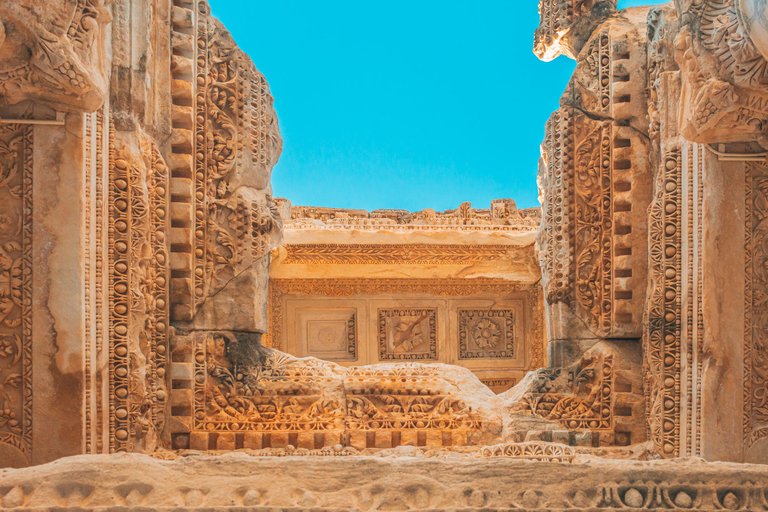
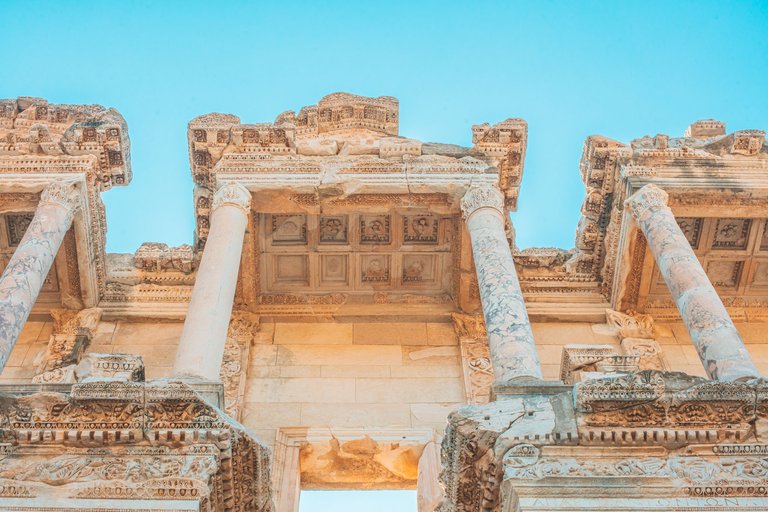

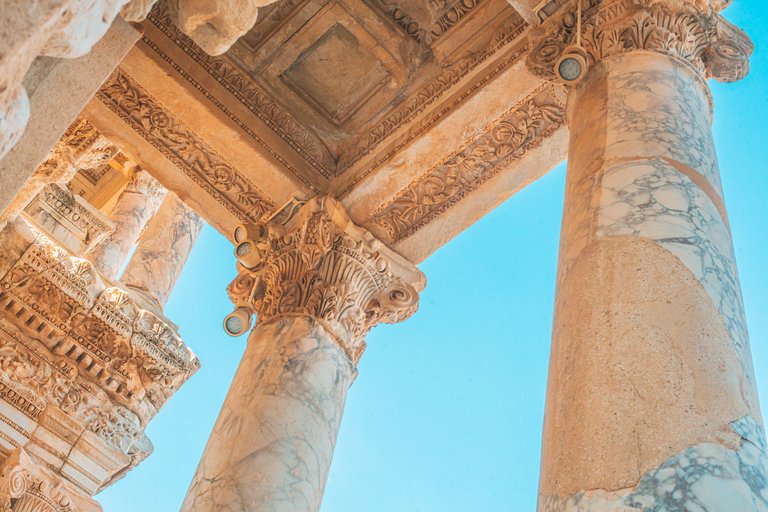
Architectural Impact
The design and concept of the Library of Celsus made an impact on libraries all over the world (till this very day). The functionality, usage of symbolism, and greatness can still be seen in many library designs we see today. The Romans had pretty good taste, or... maybe we all have a little taste of Roman in us, at least some of our architectures that is.
As mentioned in the collection post of my visit to Ephesus, the entire city of Ephesus is a UNESCO World Heritage Site. This recognition highlights the importance and its historical and cultural significance on a global scale.

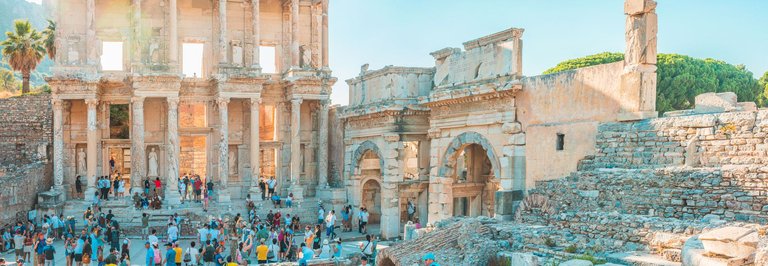
Mazeus & Mithriadates Gate
Right next to the Library of Celsus, you can find the Mazeus & Mithriadates Gate. It is a remarkable example of Roman architectural ingenuity. A double-gated doorway made of marble and infused with reliefs and decorations. The gate is named after two prominent people: Mazeus and Mithridates. Mazeus was an architect and Mithridates was the governor of Ephesus. Both of them were responsible to make sure the gate was being constructed while Emperor Augustus was in control.
The gate shows scenes from Greek Mythology and Historical events. You can see how symbolic the design was of the gate. Besides being beautifully decorated, it also had two other functions. Practical and defensive. The practical function was that it served as a passage between Curetes Street and Arcadiane Street, the two major roads in ancient Ephesus. Defensively wise, the gate gave the control who had access to the city center. This basically meant that the gate was located in a pretty good strategic spot.
The details of the gate showed how well skilled the craftmanship was, and how artistic the builders were who created it. This is why I personally love Roman and Greek architecture, or any old architecture to be honest. The 'small' details often take the longest, yet they are there to beautify the city, making everybody happy when they look at it.
But with all beauty, it doesn't last forever. Just like the Library of Celsus, the gate has suffered damages over the years. Not everything is retrieved, but some of the reliefs and architectural elements have been restored. I am quite happy I got to appreciate this in person.
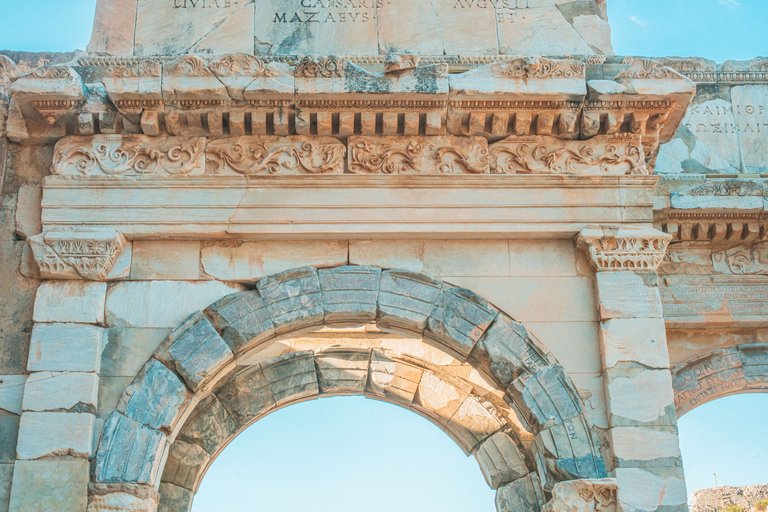

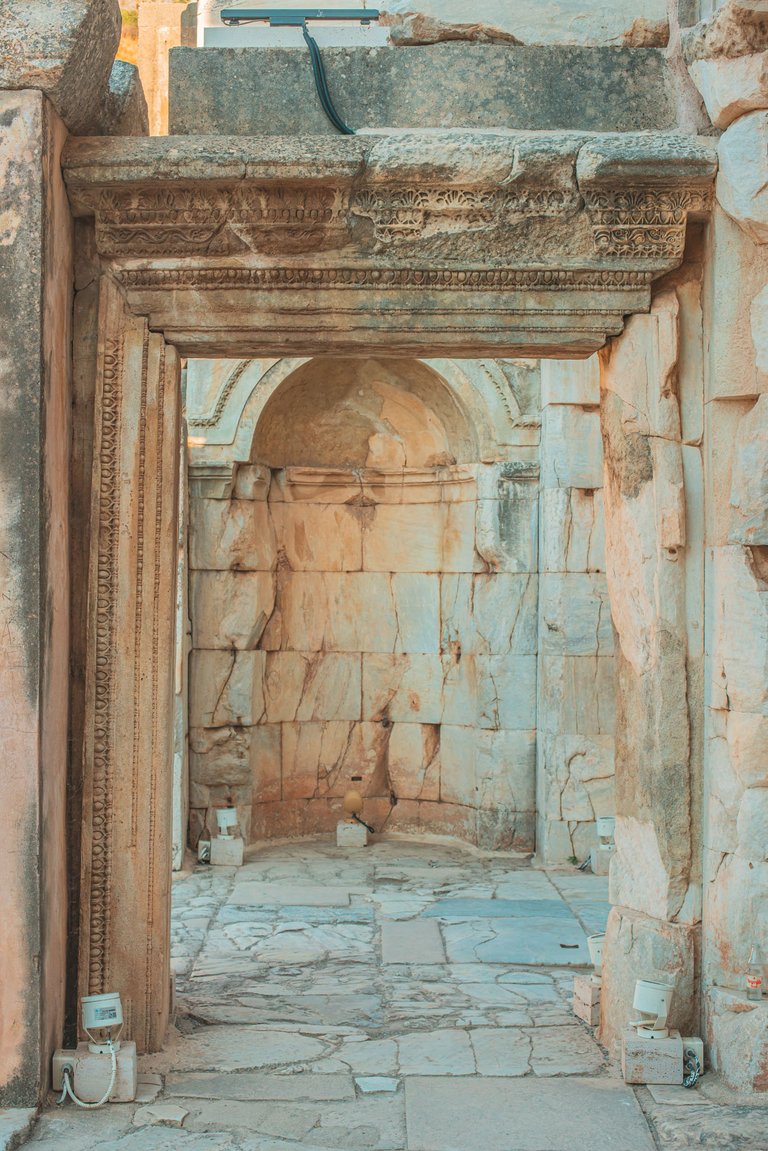
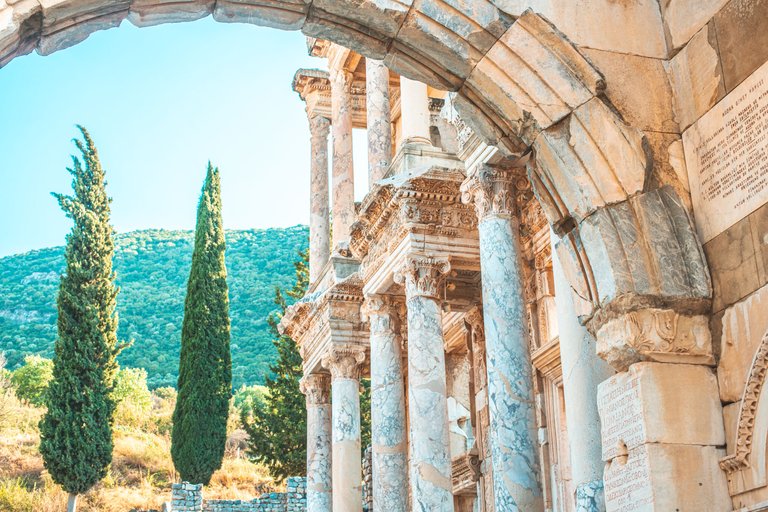
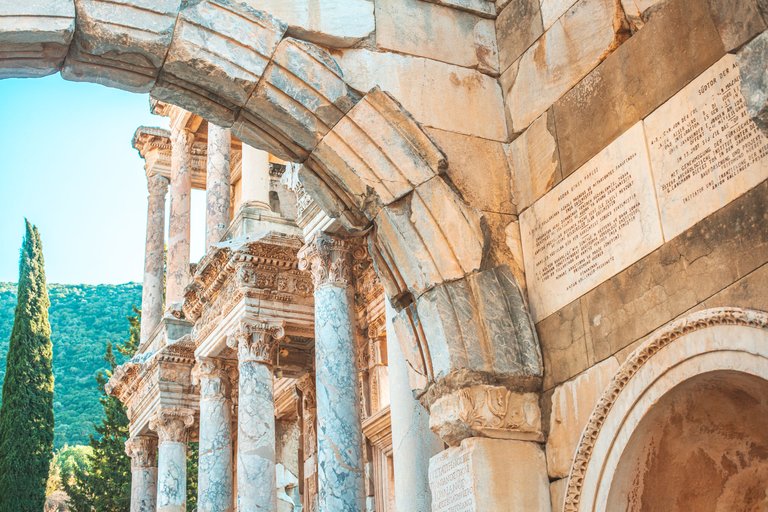
World tourist attraction
The Library of Celsus and the Mazeus & Mithriadates Gate are true tourist attractions. People all over the world come especially to see the Library of Celsus (and the Grand Theatre). Cultural heritage is always interesting and holds a lot of value. It allows us to get a glimpse into the lives and aspirations of the people who used to live in Ephesus during the Roman era. Truly magnificent.
Cheers,
Ruben
I don't see any books. Must not be a very good library.
You are right. Everyone who seems this will know that it was built by the people of Rome. The amazing thing about buildings like this is that no matter how old they are, they still remain strong. The building is not even looking like one that will collapse in the next few years
Nice pictures!
This post has been manually curated by @steemflow from Indiaunited community. Join us on our Discord Server.
Do you know that you can earn a passive income by delegating to @indiaunited. We share more than 100 % of the curation rewards with the delegators in the form of IUC tokens. HP delegators and IUC token holders also get upto 20% additional vote weight.
Here are some handy links for delegations: 100HP, 250HP, 500HP, 1000HP.
100% of the rewards from this comment goes to the curator for their manual curation efforts. Please encourage the curator @steemflow by upvoting this comment and support the community by voting the posts made by @indiaunited.